
"Helping woodworkers online for over 20 years"
Using a Thickness Planer 101
A
thickness planer is a tool used for smoothing rough lumber or reducing
the thickness of a board. With a planer every board on a project can be
a perfect match. A planer will not straighten a bowed board, it would
have to be run through a jointer to get one side straight first. The
usual procedure is to joint the face and edge of a board, run it
through a planer to get the correct thickness, then rip it to width on
a table saw. Run the board through the planer face down only as many
times as it takes to make a smooth surface on the top, then alternate
removing material from one side of the board then the other, this will
produce a more stable product. Types of planers Most
home workshops will have what is commonly refered to as a "lunchbox"
machine, small, light duty units capable of surfacing a 12.5" or 13"
wide board. The
unit shown features a cutter head with three disposable blades that are
reversible when the first side become too dull to use. These units sell
for less than $500. Commercial
shops will have larger units, heavily constructed with a capacity of
25" or more and capable of much heavier cuts than the smaller models. The
unit illustrated has a helical cutter head with four sided carbide
inserts rather than straight knives. these units sell for several
thousand dollars depending on capacity and features. Helical Cutter Heads This
is a relatively new concept for thickness planers, they work really
well, but they are not cheap to set up initially. Once you have them
installed it is another story, if you hit a nail or other hard object in
the wood it is simply a matter of replacing one small, inexpensive
insert rather than an expensive blade. No special tools are required, no
time wasting adjustments, just tighten a screw and get back to work.
Each insert has four sides so can simply be rotated to a new cutting
edge. Noise
is greatly reduced, by as much as 50%, instead of one big blade
striking the wood 3 or 4 times per revolution you have small cutters,
1/2" - 3/4" in width that are staggered around the cylinder so that only
one or two are striking the wood at a time. You will have less tear-out working with knots, burls and figured wood compared to a traditional straight blade. The
one disadvantage to a helical head is that it takes more power to run
them, many of the small lunchbox units just don't have what it takes. To Operate the
Planer 1. Make sure the planer is fastened
securely in place. 2. Lower the cutting head until it just
touches the surface of the board. 3. Remove the board and lower the head
another 1/16". 4. Feed the board into the machine, it
will automatically travel through. 5. Follow with gradually deeper passes,
about 1/16" until desired thickness is obtained. Thickness planers create a lot of wood chips, it is a good idea to hook them up to a dust collector.
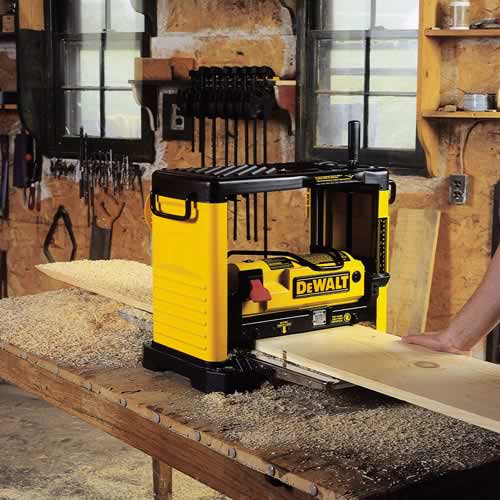
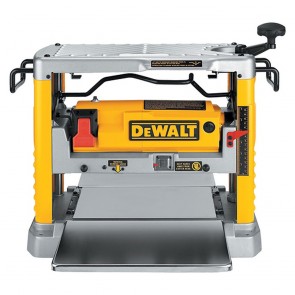
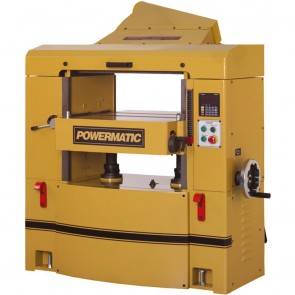
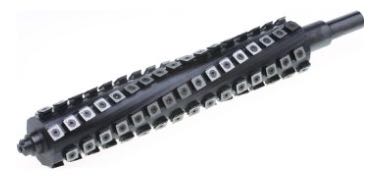

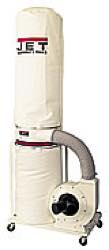
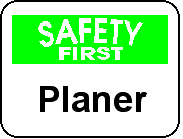
|